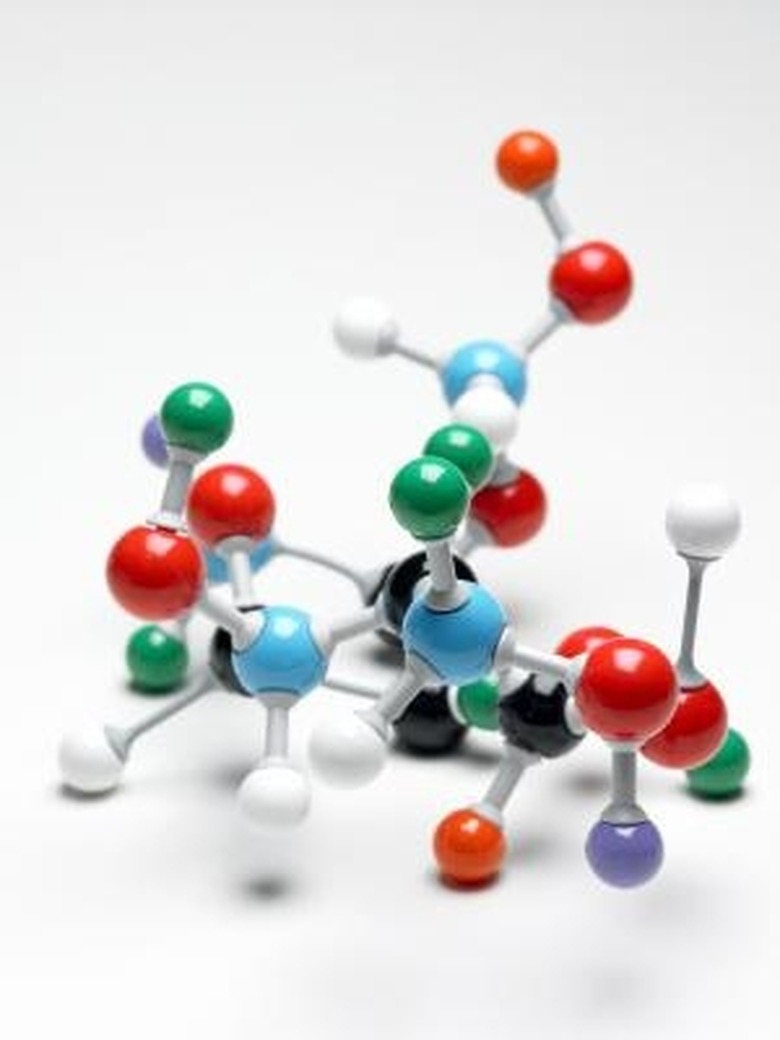How To Interconvert Moles, Molarity And Volume
In chemistry and physics a mole describes an amount of a substance in grams equal to its atomic mass. For example, one mole of aluminum has a mass of 13 grams since it has an atomic mass of 13. Also, one mole of a substance contains Avogadro's number of atoms, namely 6.02 times 10 to the power 23. The molarity, or concentration of a solution, equals the number of moles in the solution divided by its volume. Conversion between moles, molarity and volume is performed frequently in science problems.
Step 1
Calculate the molarity of a solution in moles per liter, given moles and volume in liters, by dividing the number of moles by the volume. For example, a 5.0 liter solution containing 10.0 moles has a molarity of 2.0 moles per liter.
Step 2
Determine the number of moles in a solution, with molarity and volume known, by multiplying molarity in moles per liter by the volume in liters–an example being a 2.0 liter solution with a molarity of 3.0 moles per liter. There are 6.0 moles in the solution.
Step 3
Compute the volume of a solution in liters, given the number of moles and molarity, by dividing the number of moles by the molarity in units of moles per liter. For example, a solution containing 6.0 moles and a having a molarity of 3.0 moles per liter has a volume of 2.0 moles per liter.
Cite This Article
MLA
Hirsch, William. "How To Interconvert Moles, Molarity And Volume" sciencing.com, https://www.sciencing.com/interconvert-moles-molarity-volume-7811231/. 24 April 2017.
APA
Hirsch, William. (2017, April 24). How To Interconvert Moles, Molarity And Volume. sciencing.com. Retrieved from https://www.sciencing.com/interconvert-moles-molarity-volume-7811231/
Chicago
Hirsch, William. How To Interconvert Moles, Molarity And Volume last modified March 24, 2022. https://www.sciencing.com/interconvert-moles-molarity-volume-7811231/
